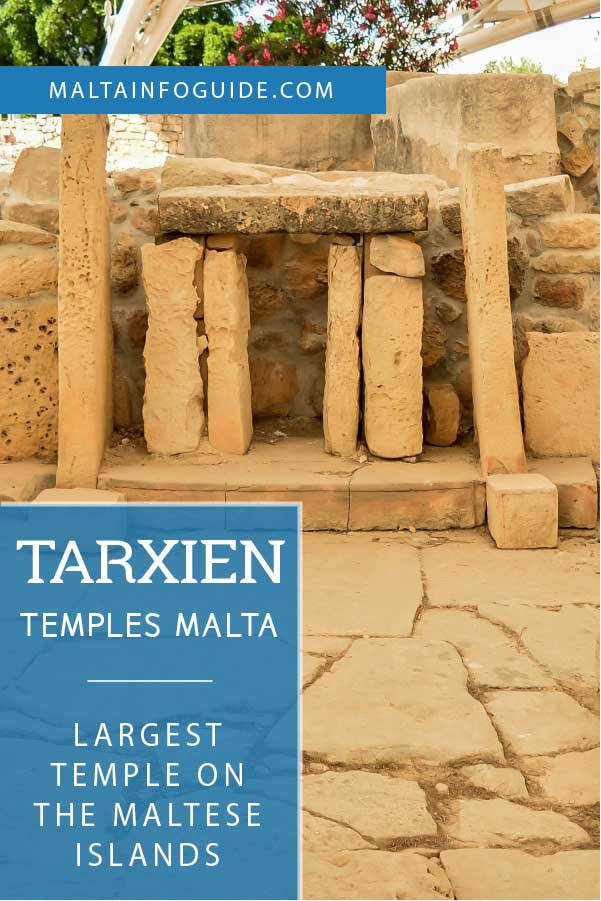- Home
- Malta UNESCO Sites
- Tarxien Temples
explore the Tarxien Temples
Essential Tips That Will Help You Visit The Temples
Tarxien temples is one of the largest Megalithic temples in Malta with four distinct temples adjoining each other. If you love art and is curious what it was like, this is the place to come. It is the richest and most elaborate in terms of sculptured decoration and iconography a showcase of prehistoric art.
Ironically, they were found by farmers in 1913 as at the time they were buried in debris. The plough used to get stuck in large stone and reported them to the museum of archaeology.
It is located just 500 metres away from Hal Saflieni Hypogeum
Disclaimer — We may earn a commission if you book via certain links on the website. No extra cost to you.
📹 Top 7 Best Places To Visit in Malta For 2025
Wondering which spots in Malta should be on your 2025 travel list? Join us on a journey across Malta as we highlight breathtaking views, cultural gems, and experiences you won’t want to miss. Subscribe to our YouTube channel for more content like this. (Sound ON 🔊)
Why you should visit the Tarxien Temples
- Built between 3600 and 3000 BC. A unique experience not to be found elsewhere as they are older than the pyramids of Giza in Egypt (2600 BC) and Stonehenge (1500 BC).
- It is inscribed in the UNESCO World Heritage Sites.
- The largest temple complex in the Maltese islands.
- Unique prehistoric art found within these temples.
- Unique prehistoric statue which is believed to represent the goddess of fertility.
- Iconic spiral motifs and reliefs of two bulls and a sow.
- The large protective tent protects you from rain or sunlight and where you can be more relaxed to observe and understand.
- The walkway is helpful to guide you around and read several information boards.
- You can also book the audio visual guide in various languages.
- Very easy access around the site with walkway.
- Easy to photograph.
Malta Tarxien Temples Admission
opening hours
- Monday to Sunday: 9:00 – 16:30
- Closed on 24, 25 and 31st December, 1st January and Good Friday.
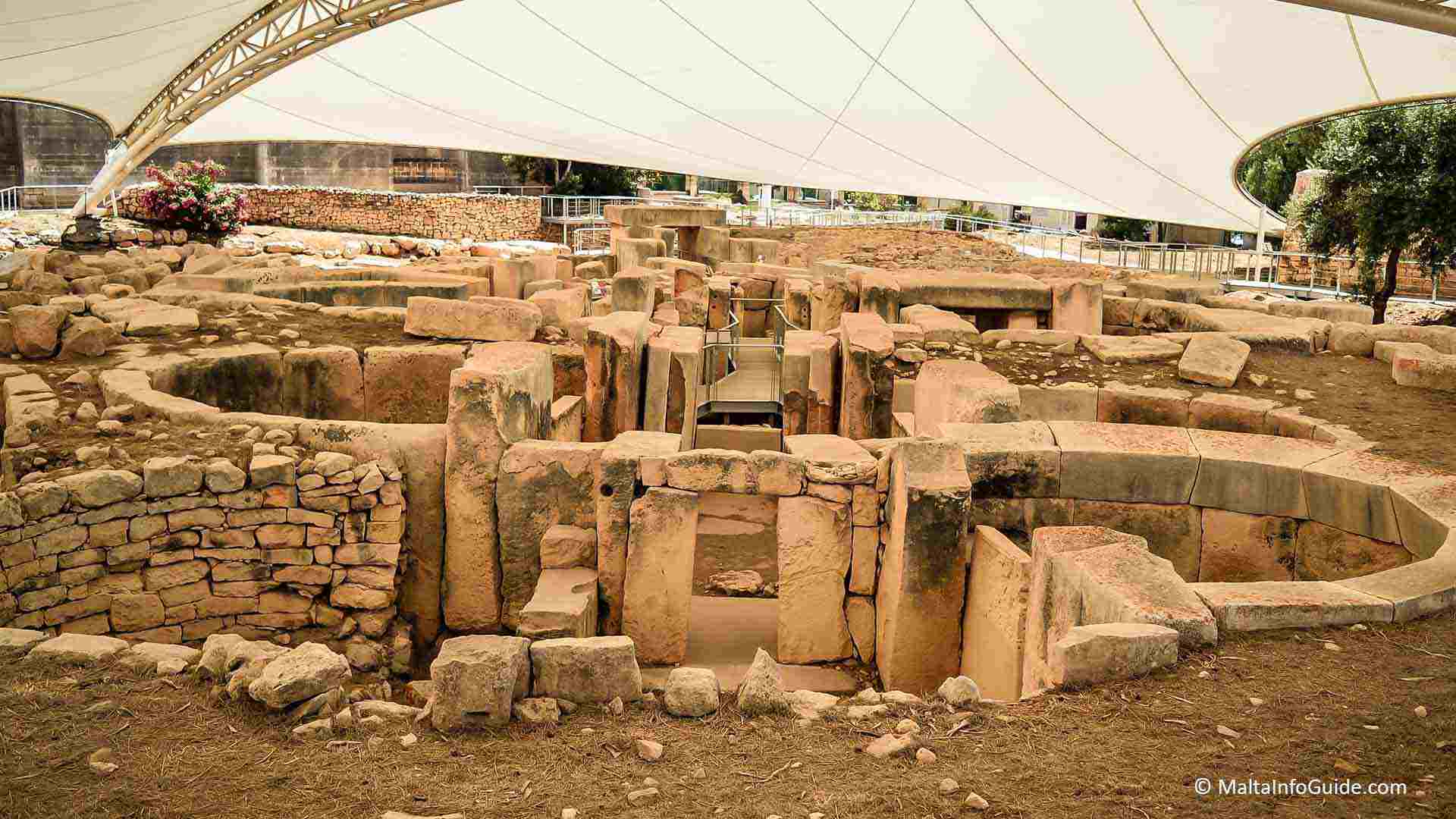
The Three Temples
south temple
At the South Temple the largest collection of megalithic art was found, mostly stone blocks carved in relief, showing various spiral designs. Even animals which they used to rear included goats, bulls, pigs and a ram. They were killed and offered as sacrifice to the ‘goddess of fertility. They were part of their daily meals and animal skins used for their clothing.
central temple
The last to be built was probably the Central Temple which has the most complex plan divided into six apses. The main altar is decorated with spiral designs. Underneath it archaeologists found horns and bones of animals and a flint knife. A flat slab with drawings of animals embossed on it was also found.
east temple
The East Temple was the first to be built in the Tarxien Phase (ca. 3000 – 2500 BC), followed by the South and Central Temple.

Tarxien Temples Timeline
Between 1913 to 1936
The site was hidden for centuries under accumulated dust and used as fields until 1913 when a local farmer got his plough stuck on some large stones.
During 1913 Sir Temi Zammit the director of Museums and Maltese Archaeologist at the time declared that two prehistoric megalithic temples including fragments of pottery were dug up, all this showed that they were from prehistoric times.
Due to increased interest on the local scene again Sir Temi Zammit conducted an archaeological dig (Extensively excavated) between 1915 and 1919.
During these same years stretches of walls that were missing were rebuilt as rubble walls which can still be seen today.
During 1920 the Archaeological Museum undertaken a number of minor interventions to conserve various areas of the site from deteriorating further.
During 1936 adjacent to the already excavated sites new graves were being dug to increase the capacity of Tal-Erwieh cemetery forming part of the Tarxien village, a large Megalith was discovered.
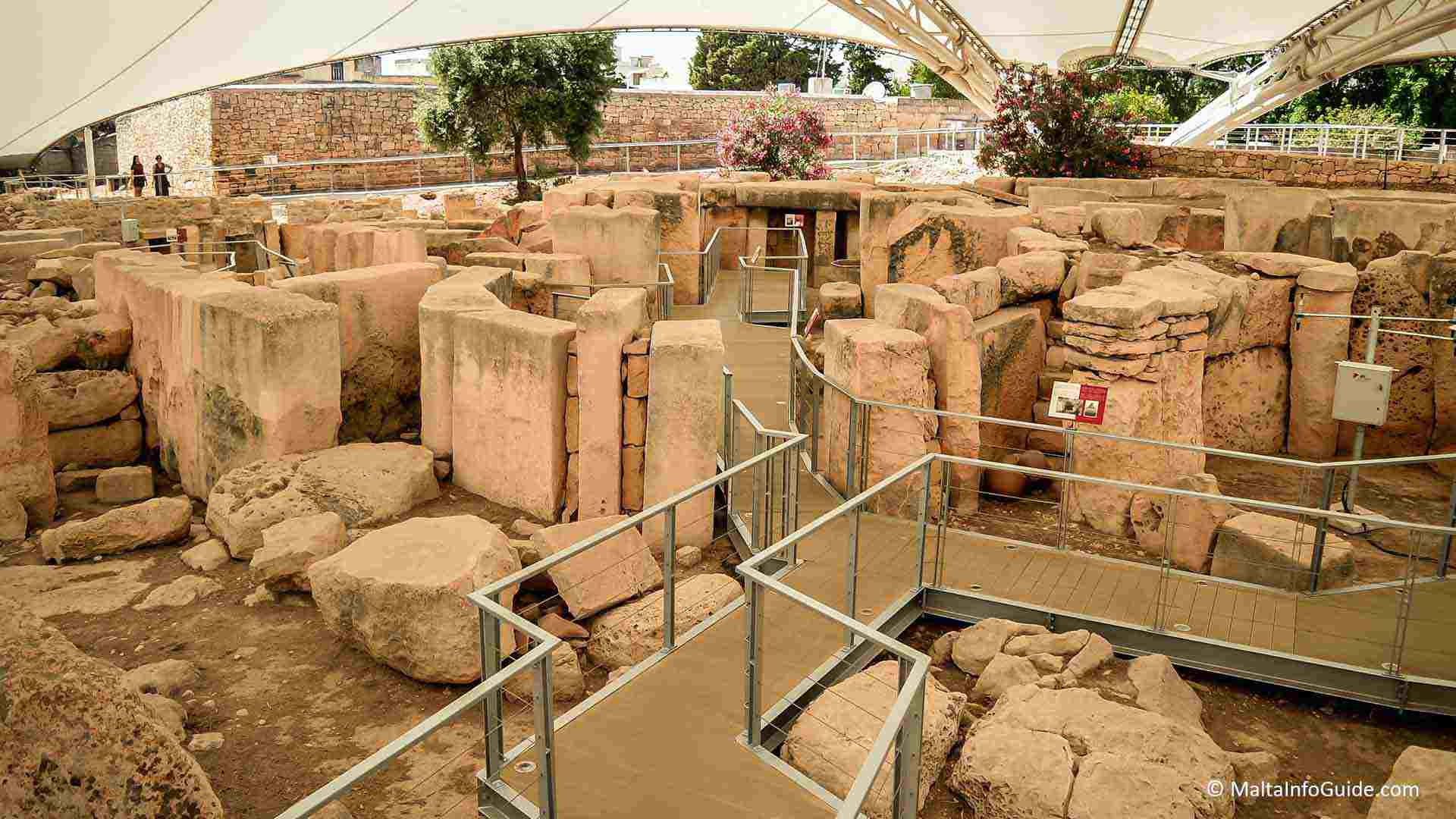
During the 1950s
During 1958 more evidence was unearthed due the continuation excavations by JD Evans’s.
Only four years late, Dr. David Trump, who is carrying out further excavations at the site, has discovered the possible rEuse of a chamber as a cellar in Roman times.
Due to the sensitivity of the findings in 1956 thirteen decorated limestone blocks were removed from their original positions and taken inside the National Museum of Archaeology. This was the only way how to preserve them from deteriorating further. Copies were sculptured and positioned instead of them.
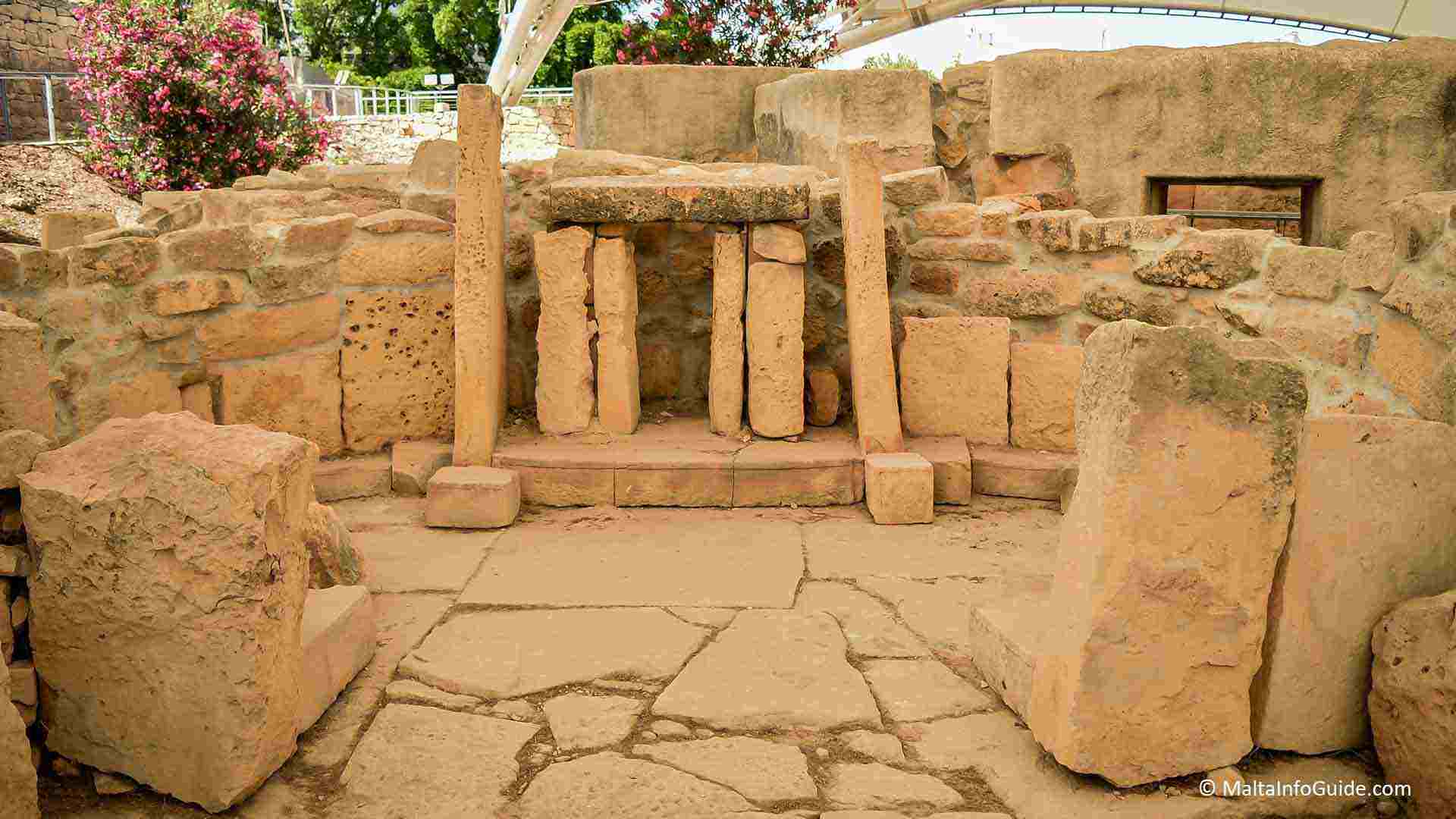
For better preservation copies were placed on site. The original blocks in the museum are now in a better state that the modern copies due to the natural deterioration of the natural stone.
During the 1950s, several megaliths were restored with cement application. Now-a-day cement is know to cause damage to limestone but at the time those were the methods applied.
Again during 1950 the main doorway was reconstructed in concrete as it is seen today suggested by the typical trilithon doorway of most temples. This was modelled on fragments of a stone model of a façade discovered in this temple. Still the original formation of the doorway is unknown.
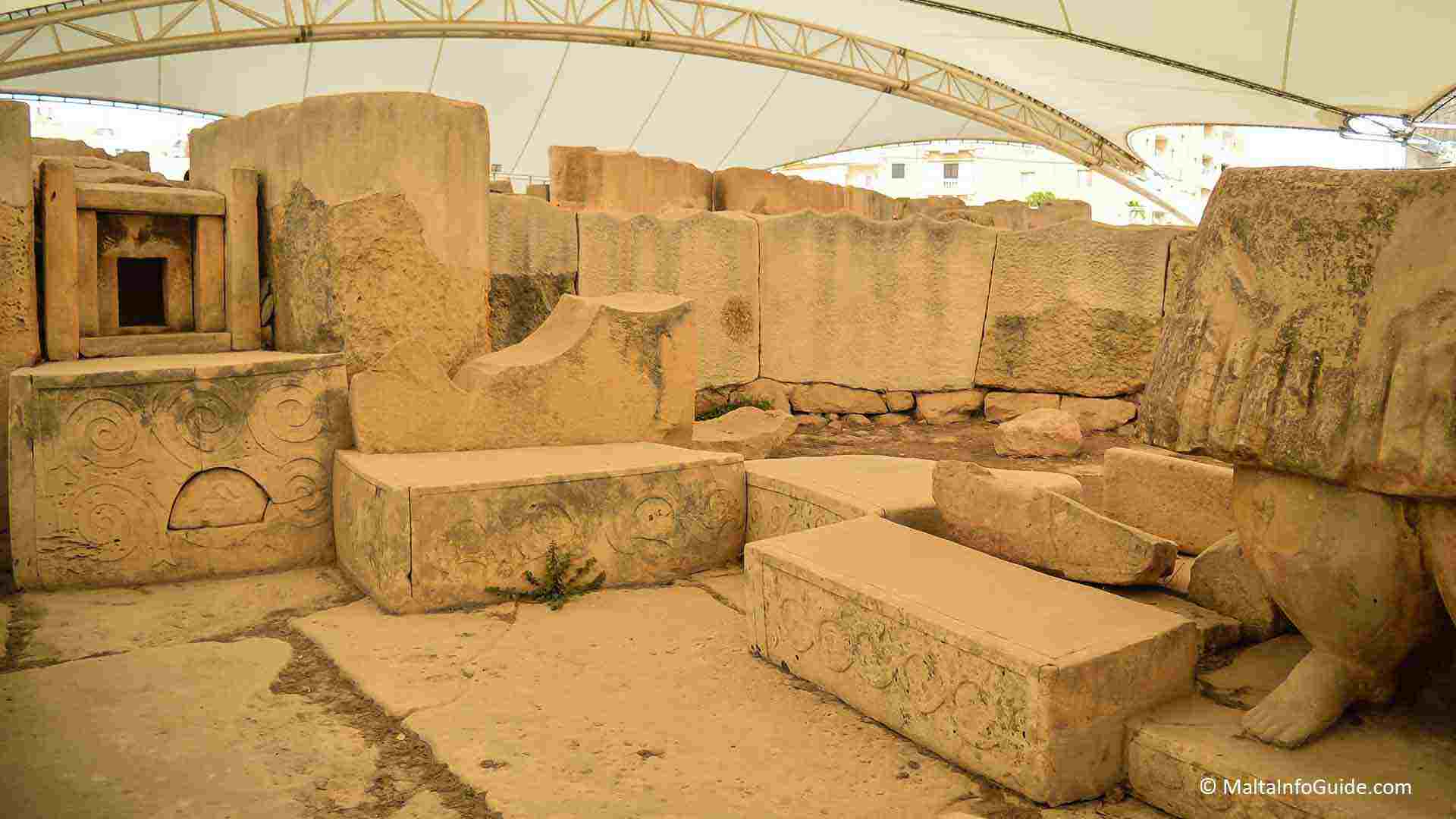
during the 21st Century
During 2012 a modern elevated walkway was installed to
give the visitor a better viewpoint to appreciate the temples. Inscriptions at
different locations describing that specific area of the temple.
A large protective tent covering the three main temples was erected to shelter the site from natural pollutants within the air apart from continuous change of cooling and heating wetting and drying which cycles harm the soft globigerina limestone deterioration.
These two projects were funded by the European Regional Development Fund (ERDF) 2007-2013 as part of the Archaeological Heritage Conservation Project.
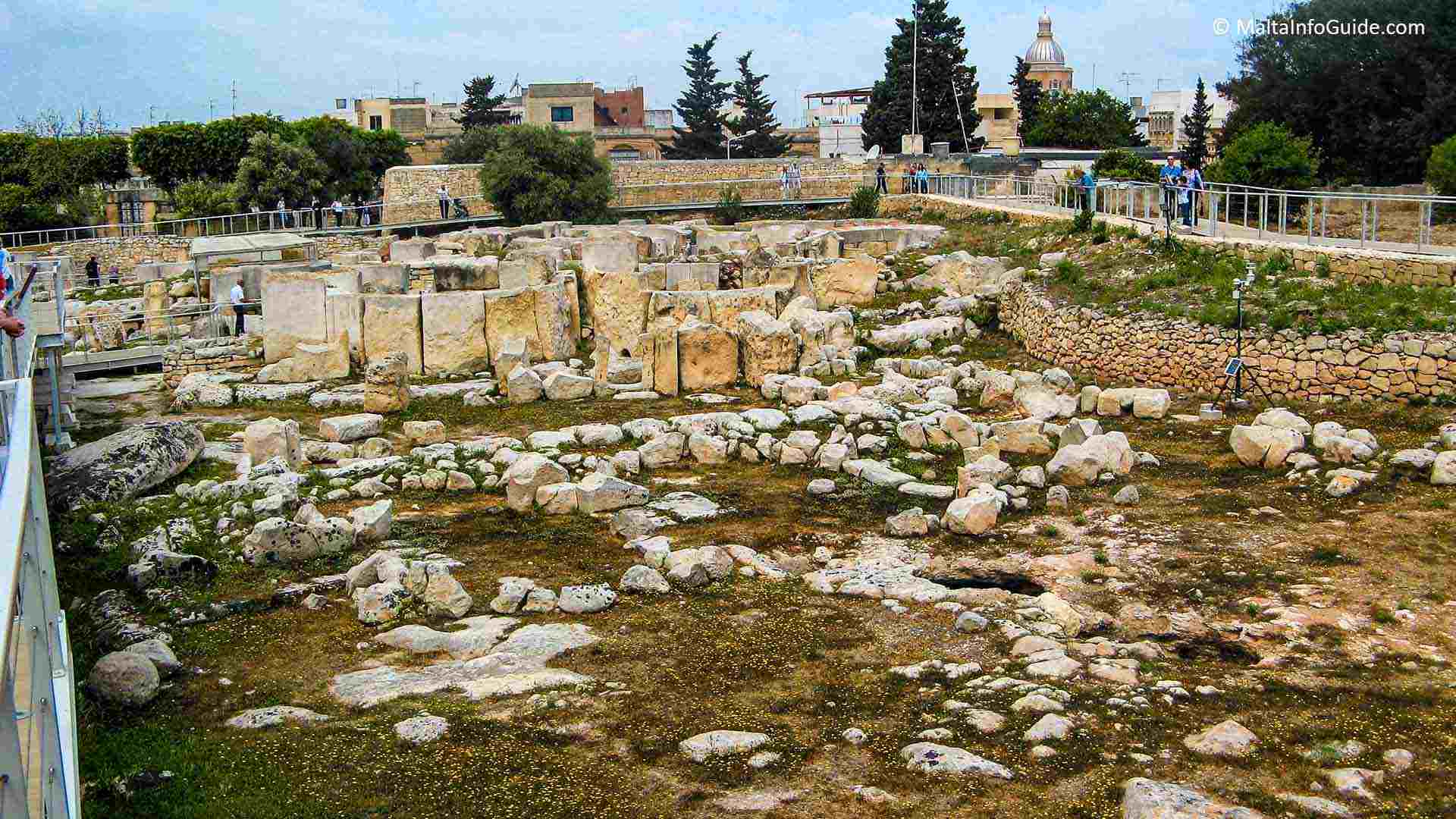
How to get to Tarxien Temples
Tarxien temples is located very close to Hal Saflieni Hypogeum in Paola. Getting there by car and also by public transport is fairly easy.
getting here by car
Address: Neolithic Temples Street, Tarxien TXN 1063
The temples are located in Neolithic Temples Street in Tarxien. To find the exact location, see the map below.
Getting to Hypogeum is quite easy. Parking close to the premises might be slightly difficult as it is situated in a residential area. A parking area is not available so you will have to go round the neighbouring streets to find.
getting here by public transport
by bus
- To 'Antnin' Bus Stop (Direction to Valletta): Direct routes 81, 82, 84, 88, 206.
- To 'Neolitici' Bus Stop (Direction to the South of Malta): Direct routes 81, 82, 84, 85, 88, 206.
- To/From Valletta: Direct Routes 81, 82, 83, 84, 88.
by Hop-On Hop-Off
The Red South Route for both sightseeing operators namely Malta Sightseeing & City Sightseeing Malta pass from here with a stop at the main road a minute walk to the temples.
map of tarxien temples
What You Find Round The Temples
places where to eat
Various snack bars are located at Paola main Square area beside the parish church about 5 minutes walk from the Temples.
closest village
Paola is the closest village. Today Paola and Tarxien are jointed together due to population growth.
cultural attractions
- Hal Saflieni Hypogeum
- Tarxien Temple is one of the UNESCO World Heritage Sites since 1980.
Want To Share This Page On Pinterest? Pin It Here!
🏨 Find the Best Places to Stay Nearby
This fantastic interactive map below helps you discover the best accommodation across the island from a variety of trusted platforms. Explore different areas, compare prices, and book directly all in one place.
🚗 Need a car for your Trip to Malta?
Discovering the beauty of this gem in the Mediterranean by car is certainly the best way to experience its hidden beaches, charming villages, and also hidden paths that are difficult to reach by public transport.
Find The Best Rates On Your Car Rental Now!
 By Albert and Benjamin Magro
By Albert and Benjamin Magro